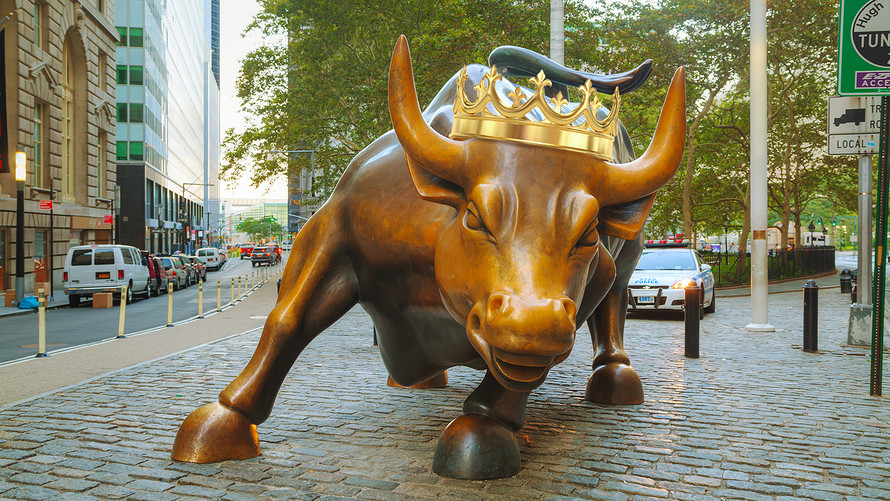Introduction to the Wall St Bull
Welcome to the fascinating story of a symbol that has stood the test of time amidst controversy and adoration – the Wall St Bull. This fearless statue is more than just bronze; it represents power, wealth, and New York City’s capitalism. Let us delve into this captivating evolution of a cultural icon that has fascinated both locals and tourists.
Controversy surrounding the Bull’s installation
The installation of the Wall St Bull in New York City’s Financial District caused a lot of controversy in both art and financial worlds. The bull was seen as an intruder by some people who thought it represented aggressive capitalism when it was first placed at Bowling Green Park.
Critics argued that its placement represented Wall Street’s unchecked greed and recklessness, especially coming just after the 1987 stock market crash. Arturo Di Modica, who created this sculpture meant for it to be a symbol of resilience and strength but he faced criticism from those who believed it glorified excesses.
However, despite all these criticisms, over time, the Bull became accepted not only as a representation of Wall Street but also as a cultural icon synonymous with ambition and prosperity. Its controversial beginnings only added to its mystique and enduring popularity among locals and tourists alike.
The Bull as a symbol of capitalism and Wall Street
The Wall St Bull stands tall in New York City representing capitalism at its core and the mightiness of Wall Street. It is strong, resilient, prosperous looking figure. For many people it signifies how competitive finance can be where only strong survive.
As an emblematic figure for Wall Street, The Bull embodies bullish market sentiment – optimism, confidence or upward momentum in stock prices. It reminds us about economic growth opportunities which define American capitalism. Tourists come to see this iconic sculpture not just because they appreciate art but also because they associate it with wealth, ambition or success.
Despite being criticized for glorifying greediness or excesses in finance, the Bull still stands as a testament to America’s financial might. Love it or hate it; there is no denying its importance in shaping global perceptions about money markets.
Popularity and cultural significance of the Bull
The Wall St Bull, also known as the Charging Bull, has gone beyond being just a piece of art to become a strong symbol of capitalism and financial prosperity. This iconic bronze sculpture located at the heart of New York City’s financial district attracts visitors from all over the world.
With its imposing presence and fierce stance, the Bull exudes strength and determination that are synonymous with Wall Street itself. Tourists come to see this symbol up close so that they can take pictures next to it and feel its energy.
Over time, however, the bull has become more than just a statue; it represents ambition, success and even defiance against adversity. Its image is found on numerous souvenirs and merchandise sold throughout the city.
From artists’ interpretations to social media posts capturing different angles of this beastly figure, the Wall St Bull continues to captivate and inspire people from all walks of life.
Evolution of the Bull’s appearance and placement
The Wall St Bull has undergone a fascinating evolution since it was installed in 1989. Originally, it was meant to be a symbol of resilience and strength. However, over the years, its appearance has changed to reflect different interpretations and cultural shifts.
Each change in the Bull’s appearance from its gleaming bronze surface to the distinctive patina it now boasts has sparked discussions and debates among locals and tourists alike. The initial placement near Wall Street was controversial but is now an integral part of Lower Manhattan’s landscape.
With time, the Bull became synonymous with capitalism and financial prosperity, attracting visitors from all over the world who wanted to see this famous sculpture up close. Its location is very significant; surrounded by skyscrapers and busy streets, it stands as a testament to New York City’s enduring spirit.
Impact on tourism and New York City economy
Being a symbol of Wall Street and capitalism, thousands of tourists are attracted to New York City every year by the Wall St Bull. People from all walks of life come here just to have a glimpse at this iconic statue that dominates Financial District.
The Bull has become a must-see landmark for both domestic and international tourists making New York more attractive as a global financial hub. It is also popular because many people visit this place leading to increased sales of souvenirs as well as other businesses around that cater for those who want to have closer look at this famous sculpture.
The Wall St Bull continues to draw attention not only for its artistic significance but also for its role in shaping New York City’s cultural landscape due to its larger-than-life appeal. This bronze figure goes beyond mere symbolism; it serves as a tangible reminder of how finance affects tourism in one of the most vibrant cities globally.
Criticisms and protests against the Bull
Despite being an iconic figure, there have been several criticisms leveled against the Wall St Bull over time. Some people see the Bull as a symbol of unchecked capitalism and corporate greed, which is a system that benefits few at the expense of many. Critics argue that glorifying such a symbol only serves to perpetuate inequality and economic disparity.
Protests against the Bull have taken various forms, from grassroots demonstrations to social media campaigns calling for its removal or reimagining. Activists have used art installations, performance art, and public speeches to challenge the narrative surrounding this bronze behemoth in Manhattan’s financial district.
While some see the Bull as a representation of strength and prosperity, others see it as a stark reminder of systemic issues within our society. The ongoing debates surrounding its presence continue to spark important conversations about wealth distribution and power dynamics in modern-day America.
Conclusion
The Wall St Bull stands proudly in the heart of New York City’s Financial District serving as a powerful symbol of capitalism and resilience. It has left an indelible mark on both Wall Street and popular culture since its controversial beginnings to becoming a cultural icon known worldwide. Despite facing criticisms and protests over the years, its popularity and significance remain unwavering.
The Bull’s appearance and placement have evolved over time, reflecting changes in art as well as societal values. It is impossible to ignore the impact it has had on tourism and the economy of New York City, with millions of people visiting this iconic statue every year. Whether you love or hate it, there is no doubt that the Wall St Bull has had a profound effect on both locals and tourists.
No matter if you see it as a symbol of financial prosperity or an emblem of inequality, one thing is for sure – the Wall St Bull will be talked about for years to come. Its transformation from controversy to cultural icon speaks volumes about its lasting influence on how we think about money, power, and ambition.
Check out our blog for more interesting reads.



